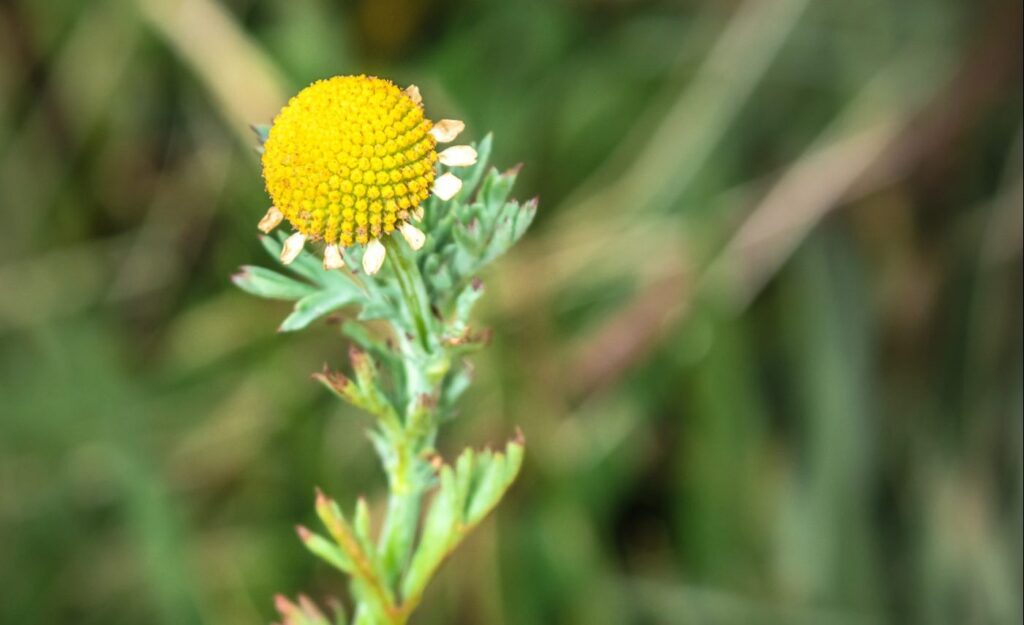
Stinknet is a plant that is native to South Africa and has become the obnoxious weed of the moment in Southern California. It first appeared here in the 1980s and has steadily made its way into almost every county in California as well as some areas in Arizona and Nevada. It’s been classified as an emerging invasive because its spread has accelerated in recent years.
Also known as globe chamomile, stinknet has thick waxy leaves that resemble those of a carrot. In the early spring, it bears yellow, ball-shaped flowers. It closely resembles the sweet-scented pineapple weed but it has a strong, unpleasant odor that has been compared to turpentine or tar. It has an upright growth habit and can reach up to 3 feet in height.
As is the case with most invasive weeds, stinkweed spreads aggressively and forms dense clumps. This chokes out natives and other desirable plants. Once established, it is extremely difficult to eradicate.
Even sheep and goats don’t like it, so you’ll have to do the dirty work yourself.
The herbicides Milestone, Capstone, and glyphosate are somewhat effective, but they can take some time to work. They should be applied before the plant flowers and has a chance to disperse its seeds. These herbicides are most effective on newly emerging plants. Stinknet’s waxy leaves and dense growth habit make it resistant to chemical control.
Mowing once or twice will cause the plant to grow low to the ground but won’t slow it down. Repeated mowing at a very low setting may exhaust the plant eventually.
Q. I garden in Fullerton and there are squirrels adjacent to my vegetable garden area. They love to eat some vegetables every year. This year I am building a 12-inch high wire cage for protection over my strawberry plants. The cage is about 5 feet square. I wish to cover the cage with wire. My Question: I plan to use 1- or maybe ¾ – inch chicken wire on the top & sides. A friend is suggesting I use ¼ – inch wire. I chose the larger chicken wire to allow more sunlight to shine on the strawberry plants. Which size wire would you suggest, or do you have another idea to keep the rodents out?
A. Squirrels are not the only connoisseurs of strawberries. Birds, mice, and rats also enjoy them. I recommend ½ – inch hardware cloth which will exclude mice as well as the other critters. Keep in mind that squirrels can dig under this cage if it sits directly on the ground. If you garden in raised beds, the cage can more easily be secured.
One of my acquaintances had a problem with crows raiding his strawberry patch. He purchased a bag of beach pebbles and spray-painted them bright red, then placed them under and around his strawberries. The crows got an unpleasant surprise when they tried pecking at the rocks and decided to move on. Squirrels are such jerks that they would probably steal both the rocks and the strawberries.
Los Angeles County
mglosangeleshelpline@ucdavis.edu; 626-586-1988; http://celosangeles.ucanr.edu/UC_Master_Gardener_Program/
Orange County
ucceocmghotline@ucanr.edu; 949-809-9760; http://mgorange.ucanr.edu/
Riverside County
anrmgriverside@ucanr.edu; 951-683-6491 ext. 231; https://ucanr.edu/sites/RiversideMG/
San Bernardino County
mgsanbern@ucanr.edu; 909-387-2182; http://mgsb.ucanr.edu/
